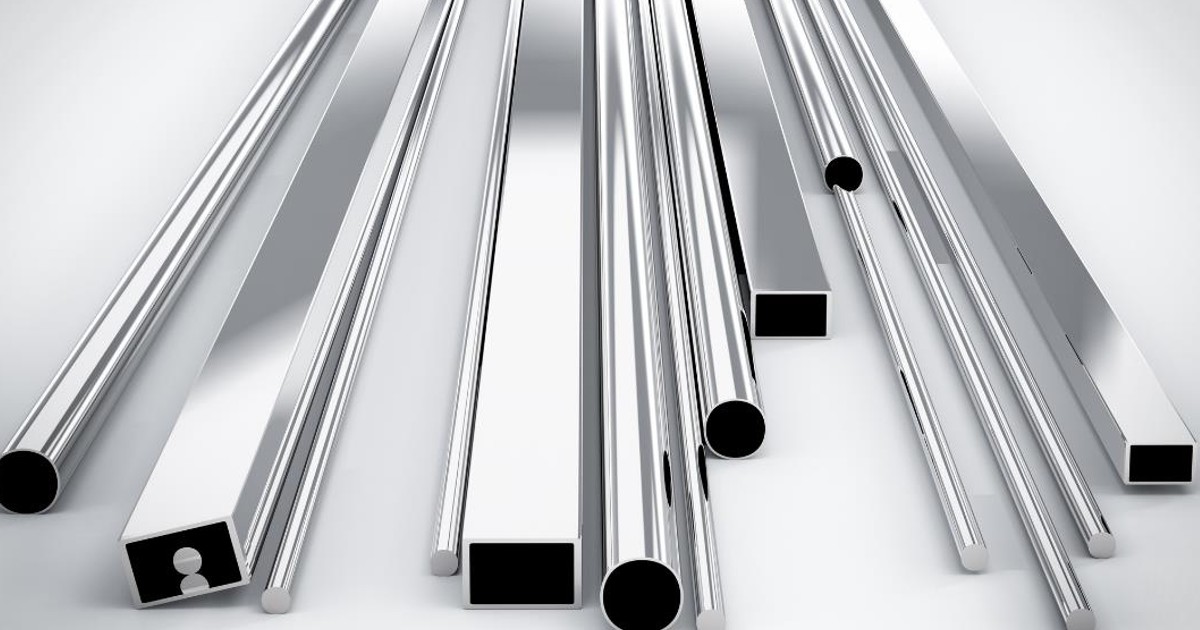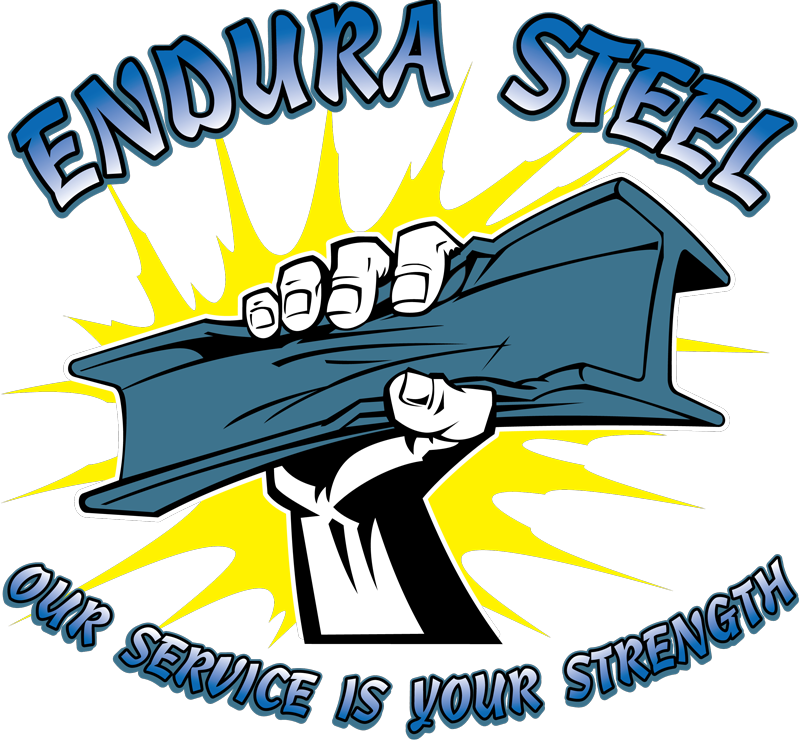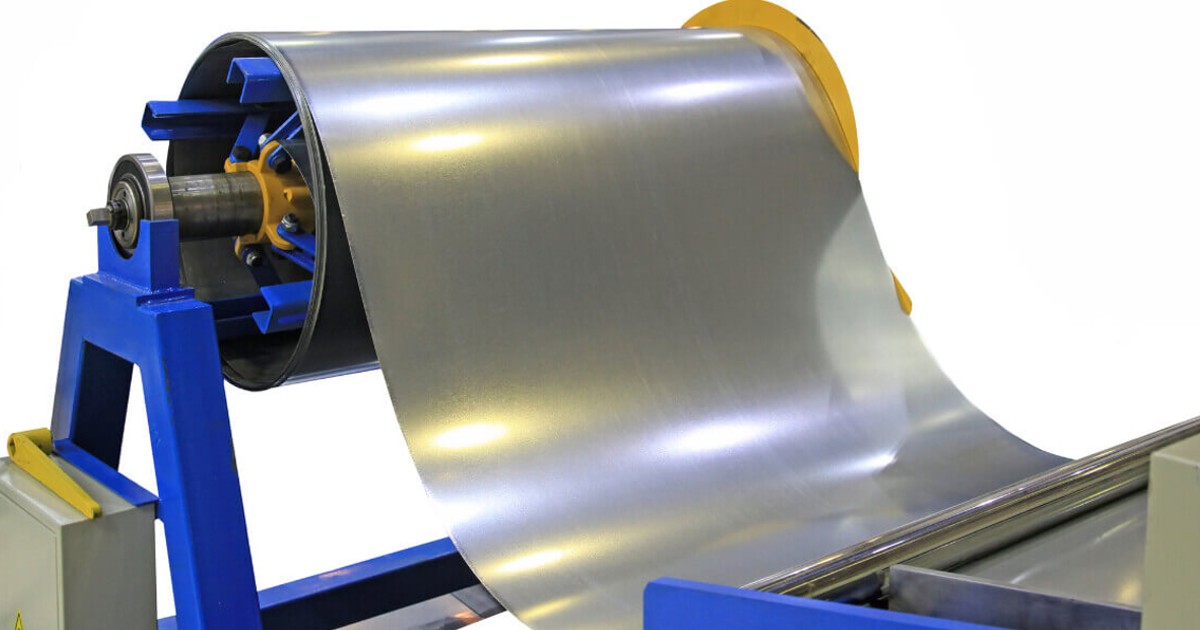In the thrilling world of metals, where the stakes are high, and the weights are heavy, we find two industry titans going head to head – Aluminum vs. Steel. These two heavyweight champions are more than just elements on the periodic table. They’re the stuff that our cars, planes, buildings, and kitchen foil are made of. Who knew the mundane could be so fascinating?
Choosing between these two is like selecting coffee and tea for a morning brew – it’s all about your preferred flavor (or, in this case, properties). Just like you wouldn’t want to gulp down a hot coffee before a jog, you wouldn’t want to pick aluminum for a job that screams for steel, and vice versa. So, buckle up as we gear to pit these two metal giants against each other, assessing their strengths, weights, and star-studded appearances across various industries. Remember, this isn’t a winner-takes-all grudge match. It’s about appreciating what each brings to the welding table. Because in the right corner, either could be your champion at the right time.
In this epic showdown, we’ll size up Aluminum and Steel, dissecting their properties, strengths, and weaknesses. As we dive deeper into this metallic realm, you’ll witness the dramatic interplay between their inherent characteristics and the applications they dominate. You’ll have a front-row seat to the nuanced dance of these two metallic powerhouses, and you’ll be equipped to choose your metallic ally wisely, depending on your needs.
Understanding the Basics

Aluminum: Its Properties, Formation, and Common Uses
Aluminum, the first contestant in our comparison, is the most abundant metal. It’s renowned for its lightweight and corrosion resistance, making it a popular choice in the transportation, packaging, and construction industries.
Aluminum is a soft, malleable metal known for its unique ability to resist corrosion due to the formation of an oxide layer when exposed to air. This characteristic makes it incredibly versatile and long-lasting. It is also a good conductor of heat and electricity, only surpassed by copper in this aspect among common metals.
In typical uses, you can find aluminum in everything from soda cans to aircraft, from window frames to kitchen utensils. In fact, due to its various beneficial properties, aluminum has steadily become one of the most used metals in the world. However, despite its many strengths, it isn’t the strongest contender in sheer power, which is where our next contestant, steel, comes into the picture.
Steel: Its Properties, Formation, and Common Uses
This material needs no introduction, thanks to its extensive use in everything from skyscrapers to kitchen cutlery. Unlike Aluminum, Steel is not found naturally. It’s an alloy primarily composed of iron and carbon, with other elements added to achieve desired properties.
Steel is celebrated for its incredible strength and durability. It’s not just about brute strength, though; Steel is also highly versatile, with different types (like stainless steel, carbon steel, and alloy steel) offering a range of properties to suit various uses.
Steel lags behind aluminum, making it less suitable for applications that require these properties because of heat and electrical conductivity. However, this is a small concession for a material that is otherwise robust and versatile.
We have laid the groundwork for our in-depth comparison of these two metals. As we move forward, we’ll delve deeper into the contrasting and complementary strengths of Aluminum and Steel, setting the stage for our grand comparison in terms of strength, weight, and applications.
Key Factors: Strength, Weight, and Applications
Now that we’ve introduced our key players, Aluminum and Steel, it’s time to delve into the specific factors that set them apart. While their basic properties already hint at their differences, we’ll focus on three key aspects: strength, weight, and applications to understand their capabilities and limitations fully.
Strength isn’t just about which material can take a punch in the world of materials. It involves various factors, including tensile strength (resistance to being pulled apart), compressive strength (resistance to being squashed), and yield strength (the point at which a material begins to deform permanently). These factors can significantly influence a material’s suitability for a given application.
Conversely, weight directly impacts the efficiency, handling, and even the cost of projects. For instance, a lighter material might be preferred in the automotive or aerospace industries to enhance fuel efficiency, while a heavier material might be more suitable for building a stable, sturdy structure. Even such things as shipping the materials to a job site can make a large difference in price and weight.
Lastly, the applications of these materials extend far beyond their strength and weight. These aspects can have an impact on their utility across different industries.
Comparative Analysis of Aluminum and Steel
 Strength
Strength
Defining strength in the context of materials is not as straightforward. It’s not about which material can lift the heaviest dumbbell or endure the most hardship. Instead, strength in material science is broken down into several categories, each having its unique significance.
- Tensile Strength: This measures how much stress a material can withstand. The higher the tensile, the better the material resists being pulled apart.
- Compressive Strength: On the opposite end of the spectrum, we have compressive strength, which measures how well a material can resist being squeezed together. The maximum load per unit area that the material can bear without undergoing significant deformation or, worst case, breaking. It’s a key factor when considering materials for load-bearing applications like building columns or car bodies.
- Yield Strength: Yield strength is the stress where the material begins to deform plastically. The material will deform elastically. It will return to its original shape. Once it is passed, some fraction of the deformation will be permanent. It’s like the point of no return in a material’s resistance journey.
Comparison of Aluminum and Steel – Strength
Now that we’ve clarified the different types of strength let’s put Aluminum and Steel to the test.
- Tensile Strength: Steel is the clear winner regarding tensile strength. The tensile strength of standard structural steel can range from 400 MPA to 500 MPA (58,000 to 72,500 psi), while aluminum’s is typically around 90 MPA (13,000 psi). This means steel can withstand significantly greater tension before failure than aluminum.
- Compressive Strength: Similar to tensile strength, steel outperforms aluminum in terms of compressive strength as well. Steel structures can bear loads without significant deformation or failure at a much higher level than Aluminum structures.
- Yield Strength: Again, Steel holds the higher ground in this category. Steel yield strength is typically around 250 MPA (36,000 psi) for structural grades, while Aluminum yield strength tends to be approximately 40 MPA (5,800 psi).
Practical Implications of These Strength Differences
- Construction: In construction, the superior strength of steel often makes it the best material for structural elements like beams, columns, and girders. It’s high tensile, compressive, and yield strength ensure that buildings and bridges can withstand heavy loads and harsh weather conditions without significant deformation or failure.
- Automotive: Despite steel’s superior strength, the automotive industry has recently shifted towards Aluminum. Aluminum’s strength-to-weight ratio makes it a more efficient choice for vehicles, reducing weight and thus improving fuel efficiency.
- Aerospace: In the aerospace industry, the strength-to-weight balance is even more critical, leading to a preference for Aluminum in constructing aircraft bodies. However, aircraft parts, such as the engines and landing gear, are often steel-made due to their higher strength and high-temperature resistance.
- Packaging: When it comes to packaging, like soda cans, Aluminum is often the preferred choice. While it may not match the strength of steel, it offers adequate strength for such applications, and its lighter weight and resistance to corrosion make it ideal for this purpose.
Other Considerations in Material Selection

Cost
While strength and weight are fundamental characteristics to consider when selecting a material, the cost is often a decisive factor. The costs of Aluminum and Steel fluctuate based on market conditions, but generally, steel is cheaper than aluminum.
- Raw Material Cost: The raw material cost of steel is typically lower than aluminum. Steel is made primarily of iron, which is abundant and less expensive than the bauxite used to produce aluminum.
- Processing Cost: The processing costs for the two metals can vary significantly. Aluminum requires a lot of energy to be extracted from its ore, increasing its overall cost. On the other hand, while steel also requires a significant amount of energy, advancements in steelmaking technology have reduced these costs over time.
- Lifecycle Cost: Consideration should also be given to the lifecycle costs of the materials. Aluminum, for instance, is more resistant to corrosion, which can reduce maintenance costs over time. Additionally, aluminum is more easily recyclable than steel, which can also affect its lifecycle cost.
Environmental Impact

In today’s world, sustainability and environmental impact have become increasingly important considerations in material selection. Both Aluminum and Steel have unique environmental profiles that can affect this decision.
- Production Impact: The production processes for both Aluminum and Steel require significant energy, contributing to their environmental impact. Aluminum production is energy-intensive, requiring electricity to convert the raw bauxite into aluminum. Steel production, on the other hand, is typically fueled by coal, contributing to CO2 emissions.
- Recyclability: Both Aluminum and Steel are highly recyclable. Steel is the most recycled material globally, with a recycling rate of over 85% in North America. Aluminum also boasts high recycling rates and the added advantage of retaining its properties during recycling, meaning it can be recycled indefinitely without losing quality.
- Lifecycle Impact: Aluminum’s resistance to corrosion can prolong the lifespan of products made from it, potentially reducing the environmental impact over the product’s life cycle. Similarly, the durability of steel can contribute to long product lifetimes.
- In-Use Phase Impact: Using lighter materials like aluminum can significantly reduce energy consumption depending on the application. For instance, in transportation, using aluminum can lead to lighter vehicles, which can lead to significant fuel savings and reduced emissions over the vehicle’s life.
Specific Material Properties

Beyond strength, weight, cost, and environmental considerations, specific unique properties of Aluminum and Steel can influence the choice between the two for particular applications.
- Corrosion Resistance: One of Aluminum’s standout features is its excellent corrosion resistance. When exposed to air, aluminum forms a thin, protective layer of aluminum oxide that helps protect the metal from further oxidation. This makes aluminum an excellent choice for applications exposed to weather or corrosive environments, such as marine vessels or outdoor structures. On the other hand, while certain types of steel, like stainless steel, are designed to resist corrosion, steel generally has less corrosion resistance than aluminum.
- Heat Resistance: Steel typically has a higher melting point compared to aluminum, making it a better choice for applications that require resistance to high temperatures, such as engine parts or cooking utensils.
- Magnetic Properties: Unlike Aluminum, Steel is magnetic, which can be advantageous in specific applications. For instance, in the electronics industry, steel’s magnetic properties can be helpful to devices like transformers and hard drives.
- Machinability: Aluminum and Steel can be machined but have different machinability characteristics. Aluminum is generally easier to cut and form than steel.
- Aesthetic Appeal: An aesthetic appeal can also play a role in the choice of material. Both Aluminum and Steel can be finished. For example, aluminum can be anodized to add color and additional corrosion resistance, while steel can be polished or give a matte finish.
Future Trends and Innovations
As we look toward the future, trends and innovations in material science could significantly influence the use of Aluminum and Steel.
- Lightweight: In industries like automotive and aerospace, there’s a strong trend towards “lightweight” — using lighter materials to improve fuel efficiency and reduce emissions. This trend could favor the use of aluminum, given its lower density than steel. However, innovations in steel, such as developing advanced high-strength steels (AHSS), are also pivotal in light weighting efforts.
- Sustainability: As mentioned earlier, sustainability is a critical consideration in material selection. Both Aluminum and Steel have high recyclability, but future innovations could focus on reducing the environmental impact of their production processes. For example, there’s ongoing research into producing steel using hydrogen instead of coal to reduce CO2 emissions.
- New Material Development: The development of new materials could also influence the use of Aluminum and Steel. For example, materials like carbon fiber and composite materials are increasingly used in applications traditionally dominated by Aluminum and Steel due to their high strength-to-weight ratios.
- Digital Fabrication: Advancements in digital fabrication techniques, such as 3D printing, could also impact the use of Aluminum and Steel. These techniques can allow for more complex designs and efficient use of materials, potentially shifting the balance between these two metals in specific applications.
Recent Developments and Future Trends

- Aluminum-Lithium Alloys: The development of Aluminum-Lithium alloys has significantly advanced the aerospace industry. These alloys have lower density and higher modulus than conventional Aluminum alloys, providing better stiffness and damage tolerance.
- High-Strength Steel: Advancements in steel technology have given rise to High Strength Low Alloy (HSLA) Steel and Advanced High-Strength Steel (AHSS). These steel types maintain the advantageous strength of steel but at a reduced weight, making them appealing for automotive applications where weight is a crucial factor.
- Aluminum in Electric Vehicles: The rise of electric vehicles (EVs) has increased the demand for aluminum due to its lightweight properties, which can help increase the range of these vehicles. From battery enclosures to body structures, aluminum is seeing a surge in usage in EVs.
- Green Steel Production: Efforts are being made to make steel production more environmentally friendly. A technique known as ‘Direct Reduced Iron’ (DRI) uses hydrogen instead of carbon in the reduction process, significantly reducing CO2 emissions. Although still in its early stages, this green steel presents a promising step toward sustainable steel production.
Emerging Trends in Material Science
- Nanomaterials: Developing nanomaterials could significantly impact traditional materials like Aluminum and Steel. Nanomaterials can have exceptional properties, such as high strength and low weight.
- Sustainability Focus: As the focus on sustainability grows, the production and recycling processes of Aluminum and Steel will likely continue to evolve. Efforts to reduce emissions and energy use will be key trends to watch.
- 3D Printing: The rise of 3D printing could also significantly impact the use of Aluminum and Steel. 3D printing allows complex designs and can reduce waste compared to traditional manufacturing methods. This could potentially shift the balance between these two materials in specific applications.
- Graphene-Infused Materials: The infusion of graphene, a material known for its strength and conductivity, into Aluminum or Steel could significantly enhance their properties. It has the potential due to the improved performance characteristics of these materials.
Recap
Enter the world of Aluminum vs. Steel and examine their strengths, weights, applications, and other factors. Both materials have strengths and weaknesses, making them suitable for different applications.
- Strength Recap: Steel, with its high tensile, compressive, and yield strengths. However, aluminum’s adequate strength and superior strength-to-weight ratio.
- Weight Recap: Aluminum’s lower density makes it a lighter material, which can be advantageous in industries like aerospace and automotive, where weight reduction can lead to improved fuel efficiency.
- Application Recap: The choice between Aluminum and Steel often comes down to the application’s specific requirements. Aluminum’s corrosion resistance, steel’s heat resistance, or magnetic properties can influence this choice.
- Other Considerations Recap: Beyond these properties, cost, environmental impact, and future trends also affect material selection. While steel is generally cheaper, the energy-intensive production of aluminum and the high recyclability of both materials can affect their cost and environmental impact. Furthermore, trends toward lightweight and sustainability and innovations in material science could influence the future use of Aluminum and Steel.
Final Thoughts
The choice between Aluminum and Steel is like coffee and tea, cats and dogs, or Netflix and Hulu. It depends on your needs and whether you’re building a bridge or a soda can. Take a moment to appreciate the metallic marvels that make up our world. Who knew metallurgy…could be so metal? (yeah, couldn’t resist)
References
1. The Aluminum Association: A comprehensive resource on all things Aluminum, including statistics, research, and industry standards.
– [Website](http://www.aluminum.org/)
2. World Steel Association: Provides a wealth of information on steel, including statistics, sustainability practices, and steel standards.
– [Website](https://www.worldsteel.org/)
3. American Society for Testing and Materials (ASTM) International: Develops and publishes voluntary consensus technical standards for a wide range of materials, including Aluminum and Steel.
– [Website](https://www.astm.org/)
4. American Institute of Steel Construction (AISC): Provides resources on structural steel design and construction.
– [Website](https://www.aisc.org/)
5. U.S. Geological Survey (USGS) Mineral Resources Program: Provides information on the occurrence, quality, quantity, and availability of mineral resources.
– [Website](https://www.usgs.gov/centers/mrp)
6. Environmental Protection Agency (EPA) – Sustainable Materials Management: Offers information on sustainable materials management, including lifecycle analysis and recycling information.
– [Website](https://www.epa.gov/smm)
7. International Organization for Standardization (ISO): Develops and publishes international standards, including those for materials and processes.
– [Website](https://www.iso.org/)
8. National Institute of Standards and Technology (NIST): A U.S. government agency that develops and promotes measurement standards.
– [Website](https://www.nist.gov/)
9. The Minerals, Metals & Materials Society (TMS): A professional organization that connects minerals, metals, and materials scientists and engineers who work in industry, academia, and government positions.
– [Website](https://www.tms.org/)
Our Locations
Get a Quote Now



